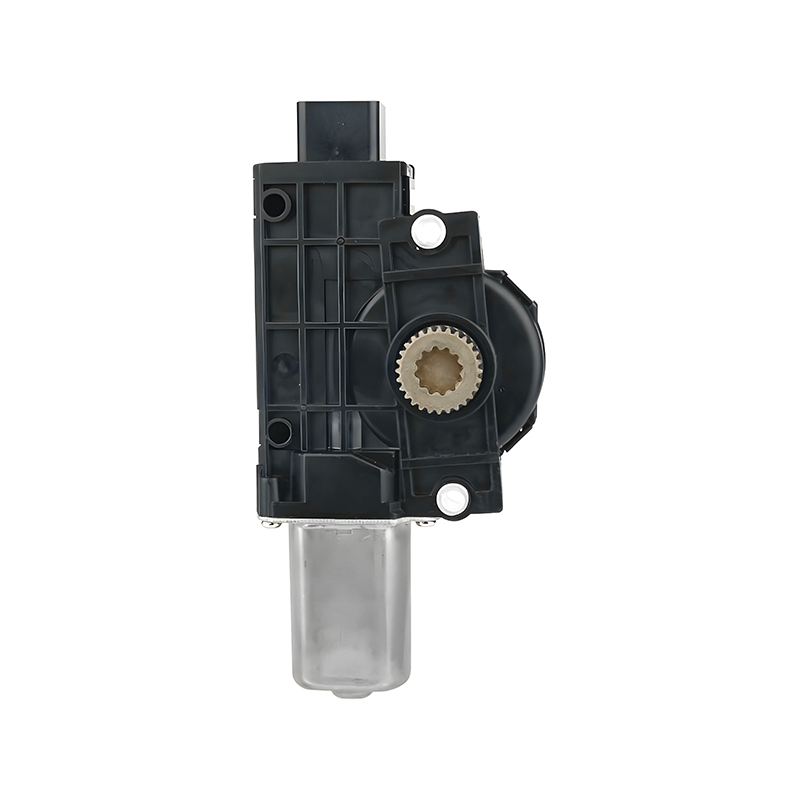In the evolving world of automotive design, the integration of compact components is becoming increasingly important. One such innovation is the low-profile sunroof motor, specifically engineered to fit seamlessly within slim roof systems. This motor design not only meets the spatial constraints of modern vehicles but also enhances the overall functionality and reliability of the sunroof mechanism. As cars continue to adopt sleeker profiles and lighter structures, integrating components like the low-profile sunroof motor is essential for maintaining both aesthetics and performance.
The low-profile sunroof motor is a compact yet robust device designed to provide smooth and consistent operation for opening and closing sunroof panels. Unlike traditional sunroof motors that tend to be bulkier, this motor's slim profile allows it to fit into limited roof space without compromising power output or durability. This design philosophy echoes the trend seen in other automotive components, such as the door regulator motor and the Mazda window motor, both of which have evolved towards more compact and efficient structures to accommodate modern vehicle layouts.

For instance, the door regulator motor, a critical element in the operation of power windows, has undergone significant changes to become smaller and more energy-efficient. Much like the low-profile sunroof motor, the door regulator motor is designed to operate quietly while ensuring reliable performance over extended periods. This motor controls the up and down movement of the window glass and must be compact enough to fit within the confined space of the car door assembly. Its design improvements contribute to a smoother user experience, paralleling the benefits offered by the low-profile sunroof motor in roof systems.
Similarly, the Mazda window motor exemplifies advancements in compact motor design for automotive applications. Engineered to meet the specifications of various Mazda vehicle models, this window motor balances size and torque, providing reliable operation even under frequent use. The focus on creating a motor that can fit within the limited door cavity without sacrificing durability mirrors the approach taken with low-profile sunroof motors. Both types of motors highlight the automotive industry's broader move toward integrating more efficient, space-saving components that maintain functionality in tight environments.
Integration of the low-profile sunroof motor within slim roof systems brings multiple benefits beyond space-saving. One key advantage is the reduction in weight, which positively affects the vehicle's fuel efficiency and overall handling. Since sunroof assemblies add to the vehicle's roof weight, having a lighter motor contributes to lowering the center of gravity and improving driving dynamics. This approach is comparable to improvements in the door regulator motor, where weight reduction efforts help enhance door assembly balance and responsiveness.
Another aspect of the low-profile sunroof motor is its ability to produce less noise and vibration during operation. Modern vehicles increasingly demand quieter interiors, and the sunroof motor plays a significant role in achieving this goal. By using refined gear designs and optimized materials, the motor reduces mechanical noise while maintaining reliable torque output. This focus on smooth and quiet operation is also evident in products like the Mazda window motor, which has been developed to operate with small noise, creating a comfortable cabin environment during window adjustments.
Durability is also a critical factor in the design of low-profile sunroof motors. Since sunroof mechanisms are exposed to environmental challenges such as temperature fluctuations, moisture, and dust, the motor must be sealed and protected adequately. The slim design does not compromise these protective features; instead, it incorporates robust sealing techniques and corrosion-resistant materials to ensure long service life. This level of durability parallels the construction of the door regulator motor, which is engineered to withstand similar environmental stresses within the vehicle door.
Maintenance and serviceability have also been considered in the low-profile sunroof motor design. Its modular construction allows for easier replacement or repair without extensive disassembly of the roof system. This practical consideration is shared by the door regulator motor, where design improvements have focused on simplifying installation and reducing service times. Meanwhile, the Mazda window motor benefits from standardized components and mounting points that facilitate quick maintenance, demonstrating how compact motor designs can be both user-friendly and efficient.
Compatibility with modern vehicle electrical systems is another crucial feature. The low-profile sunroof motor is designed to operate effectively with the vehicle's voltage range and control electronics, ensuring smooth integration with the central body control module. This capability allows for precise control of sunroof movements, including automatic stop and anti-pinch functions. Such integration is also a hallmark of the door regulator motor and Mazda window motor, both of which work seamlessly with vehicle control units to deliver reliable, responsive operation.
In summary, the low-profile sunroof motor is a key advancement in automotive component design that complements the demands of slim roof systems. Its compact size, efficient performance, durability, and quiet operation reflect the same principles guiding the evolution of the door regulator motor and Mazda window motor. As vehicles continue to become more sophisticated and space-conscious, these motors will play essential roles in enhancing driver and passenger experiences without compromising design integrity.
The trend toward integrating smaller, more capable motors demonstrates how automotive manufacturers and suppliers are addressing challenges related to space, noise, and energy consumption. Whether it is a sunroof motor tucked discreetly into a slim roof system, a door regulator motor providing smooth window control, or a Mazda window motor engineered for reliability, these components illustrate a shared commitment to advancing automotive technology with thoughtful engineering and practical design solutions.
Your email address will not be published. Required field are marked*